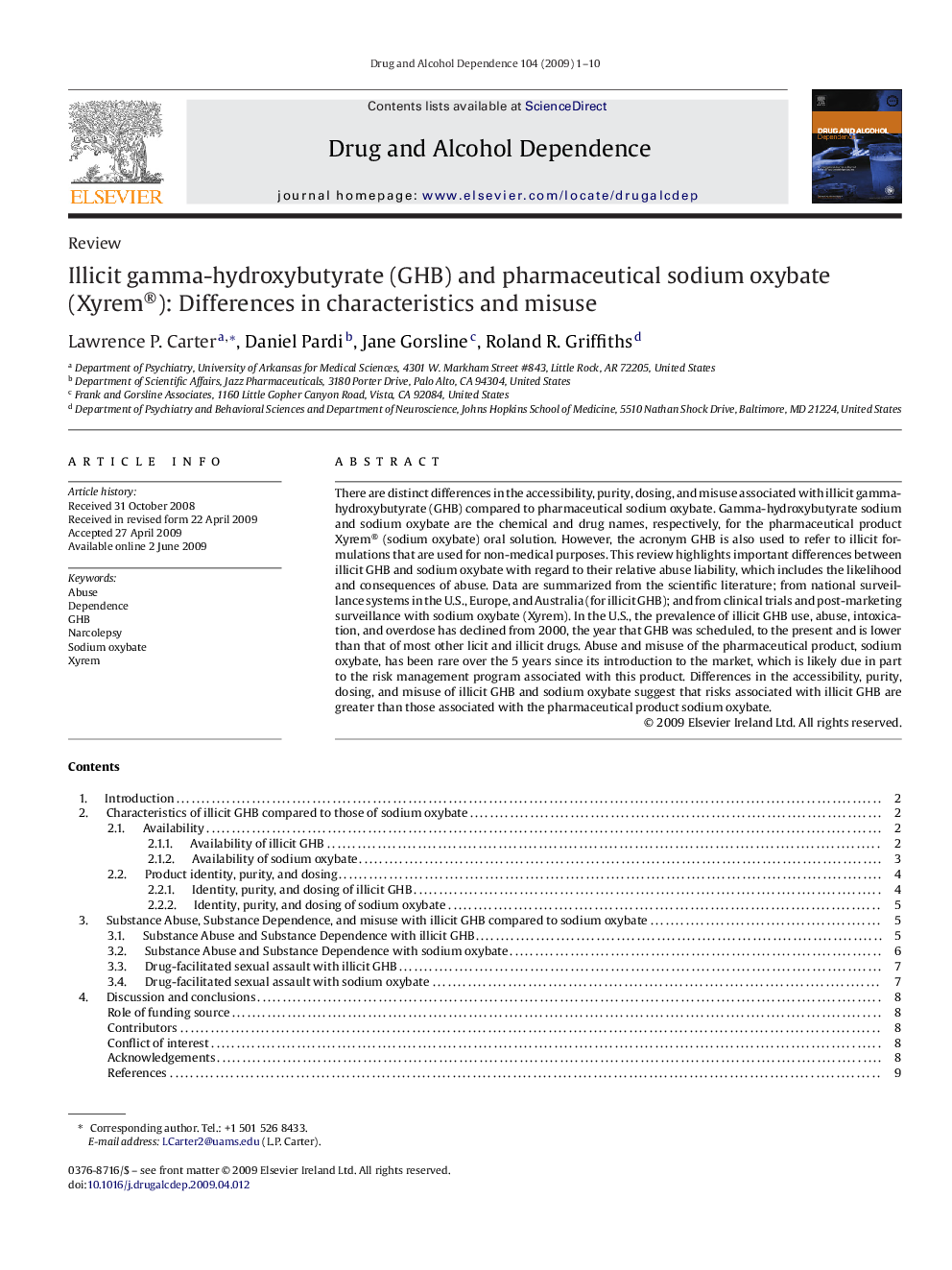| Article ID | Journal | Published Year | Pages | File Type |
|---|---|---|---|---|
| 1071060 | Drug and Alcohol Dependence | 2009 | 10 Pages |
There are distinct differences in the accessibility, purity, dosing, and misuse associated with illicit gamma-hydroxybutyrate (GHB) compared to pharmaceutical sodium oxybate. Gamma-hydroxybutyrate sodium and sodium oxybate are the chemical and drug names, respectively, for the pharmaceutical product Xyrem® (sodium oxybate) oral solution. However, the acronym GHB is also used to refer to illicit formulations that are used for non-medical purposes. This review highlights important differences between illicit GHB and sodium oxybate with regard to their relative abuse liability, which includes the likelihood and consequences of abuse. Data are summarized from the scientific literature; from national surveillance systems in the U.S., Europe, and Australia (for illicit GHB); and from clinical trials and post-marketing surveillance with sodium oxybate (Xyrem). In the U.S., the prevalence of illicit GHB use, abuse, intoxication, and overdose has declined from 2000, the year that GHB was scheduled, to the present and is lower than that of most other licit and illicit drugs. Abuse and misuse of the pharmaceutical product, sodium oxybate, has been rare over the 5 years since its introduction to the market, which is likely due in part to the risk management program associated with this product. Differences in the accessibility, purity, dosing, and misuse of illicit GHB and sodium oxybate suggest that risks associated with illicit GHB are greater than those associated with the pharmaceutical product sodium oxybate.
